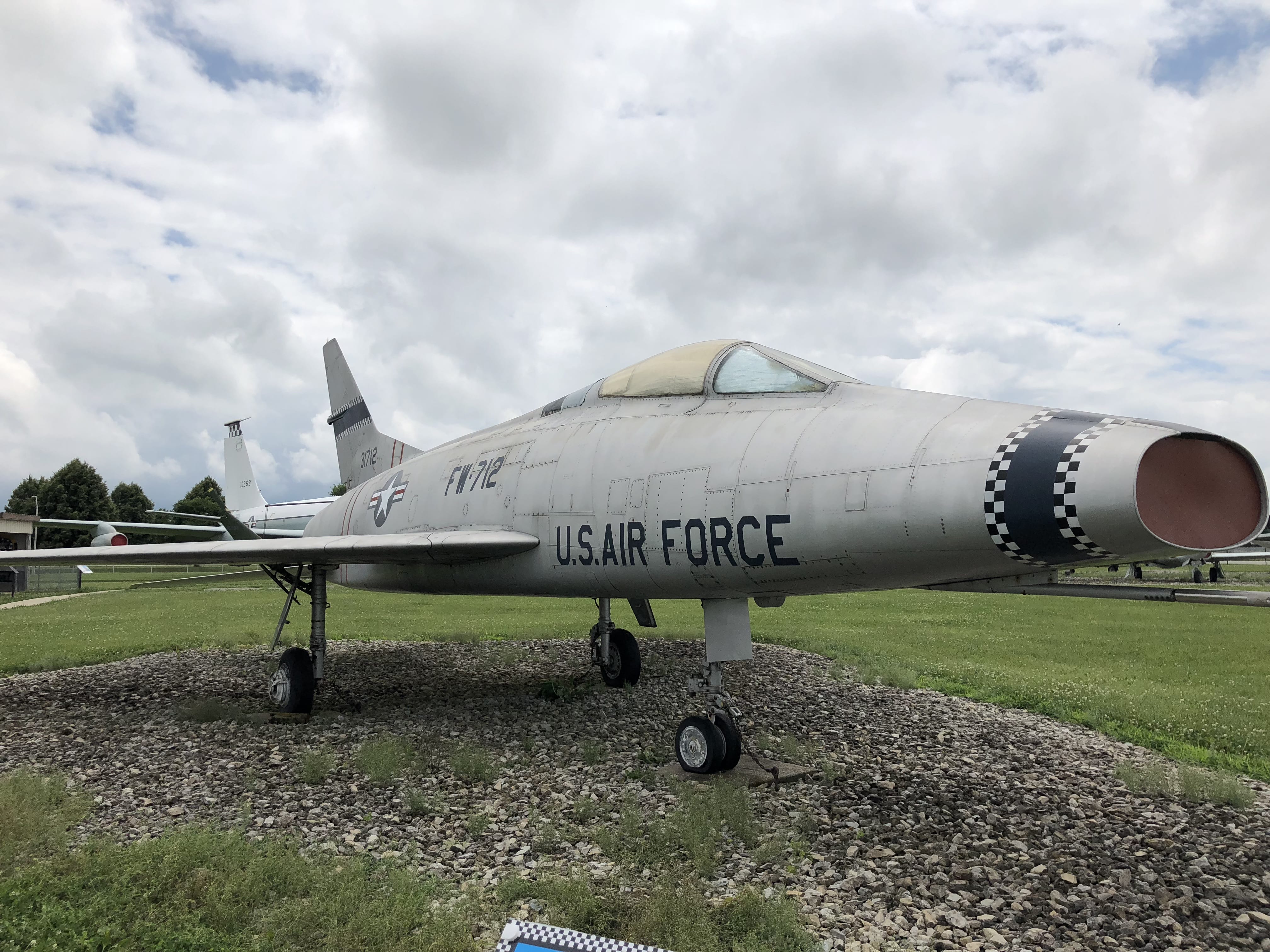NORTH AMERICAN
F-100C SUPER SABRE

The F-100 was the USAF’s first operational aircraft capable of flying faster than the speed of sound (760 mph) in level flight. It made its initial flight on May 25, 1953 and the first production aircraft was completed in October 1953. North American built 2,294 F-100s before production ended in 1959.
Designed originally to destroy enemy aircraft in aerial combat, the F-100 later became a fighter-bomber. It made its combat debut during the Vietnam conflict where it was assigned the task of attacking such targets as bridges, river barges, road junctions, and areas being used by infiltrating enemy soldiers.
The F-100C, which made its first flight in 1955, featured such advances as an in-flight refueling system, provisions for extra fuel drop tanks and bombs under the wings and an improved electronic bombing system.
Used as a fighter/bomber, the F-100 saw extensive use in Vietnam. The F-100 was flown by the USAF Thunderbirds for eight years; they flew from Grissom from 1956-1957.
Our F-100C was used from 18 September 1956 to 26 March 1957 by the NACA (National Advisory Committee for Aeronautics, the predecessor organization to NASA) High-Speed Flight Station. It was used to evaluate the behavior of a pitching motion damper. It completed thirty flights and as expected the damper further increased the aircraft’s resistance to coupling and these findings were used with the X-15 and SST studies.
The four pilots who flew our aircraft & how many times for the NACA;
Stanley P. Butchart (16), Neil A. Armstrong (10), Joseph A. Walker (3), and Capt. Hugh P. Hunerwadel (1).
The last pilot to fly our aircraft was Neil Armstrong who ferried JF-100C Serial No. 53-1712 to Davis-Monthan Air Force Base, AZ, for storage following the completion of inertial roll coupling flight research earlier that month.
| SPECIFICATIONS | |
| Span: | 38 ft. 10 in. |
| Length: | 53 ft. 11 in. (with boom extended); 47 ft. (with boom folded) |
| Height: | 15 ft. 6 in. |
| Weight: | 36,549 lbs. max |
| Armament: | Four M39 20mm cannons and 42 2.75-inch rockets or 5,000 lbs. of bombs |
| Engines: | One Pratt & Whitney J57 of 16,000 lbs. thrust with afterburner |
| Crew: | One |
| Cost: | $ 664,000 |
| Tail Number: | 53-1712 |
| Years in Service: | 1953-1977 |
| PERFORMANCE | |
| Maximum Speed: | 900 mph |
| Cruising Speed: | 600 mph |
| Range: | 1,350 miles |
| Service Ceiling: | 51,000 feet |